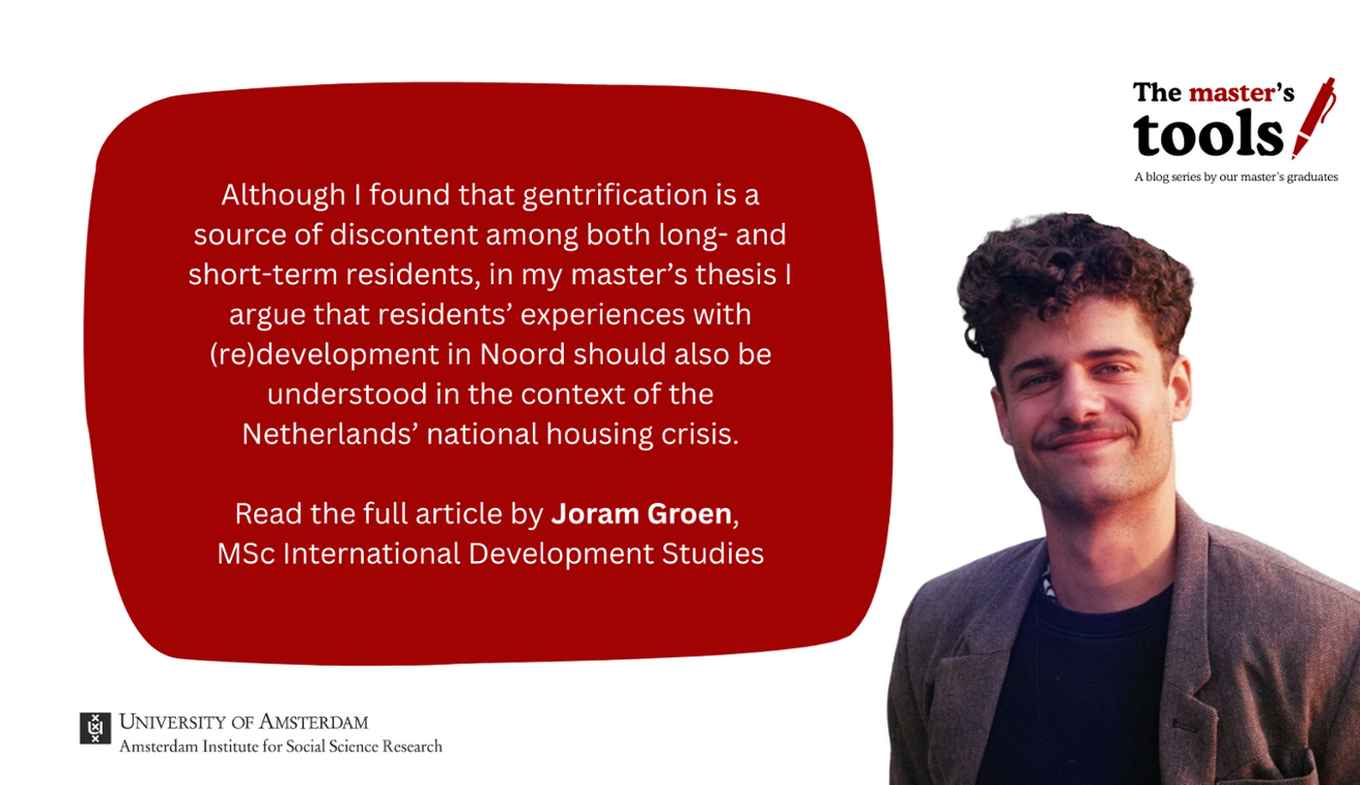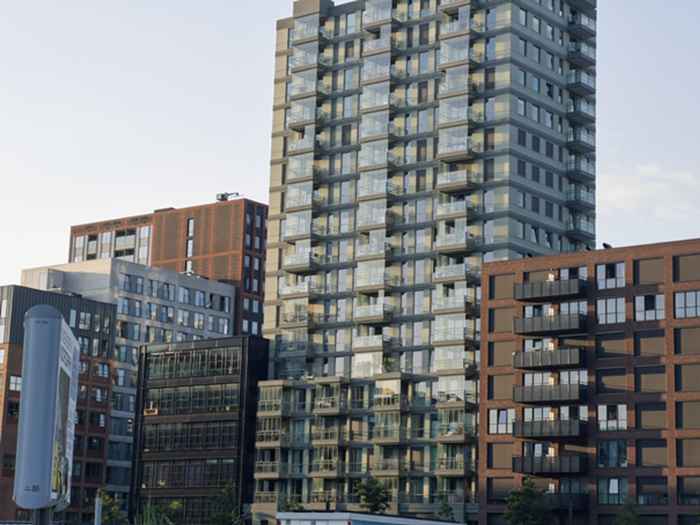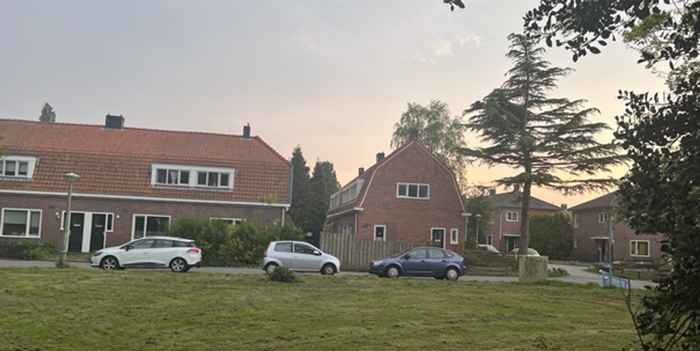Not Just Gentrification: The Housing Crisis and Discontent in Amsterdam Noord
Blog by Joram Groen
16 October 2025

In my master’s thesis, I aimed to find out why Noord’s residents were unhappy with the (re)development of their district. Though I found that gentrification is the cause of some discontent among both long- and short-term residents, I argue that resident’s experiences with (re)development in Noord should also be seen in the context of the Netherlands’ national housing crises.
The Case for Gentrification
Amsterdam Noord has changed a lot in recent years and decades. Social housing units have been sold or demolished and houses meant to be bought by middle- or higher-class households have been constructed in their place. This process is called gentrification; the upgrading of urban space for higher income households.

I am a resident of this neighborhood, and these changes often caught my attention. For this reason, I decided to use my thesis to further explore what was happening in Amsterdam Noord. Through a survey and interviews, I found that many people were worried about the increasing costs of living in Noord. “Can my children afford to live in Noord?”, people often requested in worry.
Initially, these concerns and worries seem to relate to gentrification. Many of the people I talked to said to me that Amsterdam Noord was gentrifying. “If you don't see that Noord has been gentrified... then you must be blind”, one person told me. Some people who had only moved to Noord in the last few years identified themselves as gentrifiers. Besides that, economic data on housing prices and the availability of social housing have confirmed that Noord is gentrifying.
More than Gentrification
Since Noord is so obviously gentrifying, I was surprised by some other things that my respondents told me. Many long-term residents are actually happy that Noord is changing. In the past, they would get shocked reactions when telling people where they lived. One person who I interviewed told me children from her elementary school (which was in the city center) did not want to come over to play at her place: they had never been to Noord before. Now that Noord attracts more higher-income households, long-term residents finally feel like they can be proud of their district.
Besides that, long-term residents told me that they did not mind the new families that moved to Noord. And indeed, various of these new, higher-income families told me that they moved to Noord because the gentrification of their old neighborhood made it impossible for them to continue living there. Furthermore, some long-term residents were actually happy with all the new ‘fancy’ restaurants and cafés that opened in Noord, even if they were not the target audience of those places.
Housing Crisis in the Netherlands
Rather than gentrification being the main cause of discontent around the (re)development of Amsterdam Noord, I found that the housing crisis in the Netherlands had a bigger impact on residents than just the gentrification of the district. Most long-term residents were happy that their neighborhood was getting an upgrade (which was often long overdue). However, they were worried about the ability of their children to be able to live in Noord, even when these children earned more than their parents. Similarly, new residents of Noord—including some self-described gentrifiers—like living here, but were unhappy about how their old neighborhood continued to gentrify. “[Amsterdam Noord] is the only affordable place left in the city”, one respondent told me.
Indeed, the Netherlands, and Amsterdam specifically, has been experiencing a housing crisis for a few years now. In 2024, Amsterdam was the city with the highest rental prices in Europe. Other major Dutch cities, like Rotterdam, Den Haag, and Utrecht are also in this top 10.

(Some) Takeaways
Therefore, I found that the discontent with Amsterdam Noord’s (re)development should also be seen as an effect of the national housing crises, and not just as the result of gentrification. Residents, I saw, often do not mind changes to their neighborhood. Similarly, the increase of stores or restaurants that target higher-income customers was not a large problem for long-term residents. However, the increased rent prices impacted both old and new residents of Noord! It is this tension—between the residents being happy with the upgrading of Noord and the increased housing insecurity for both old and new residents—that is not captured in discussions on gentrification.
In this point I ask myself, what does that mean for the future of Amsterdam Noord? Development of new neighborhoods and buildings has already been planned for at least ten more years. Without any major political changes, it seems that the Netherlands’ housing crisis will not be over anytime soon. Therefore, I speculate that the discontent around Noord’s development will continue. And, as other parts of Amsterdam undergo (re)development, we might see discontent popping up in places such as Amsterdam Nieuw-West and Amsterdam Zuidoost.